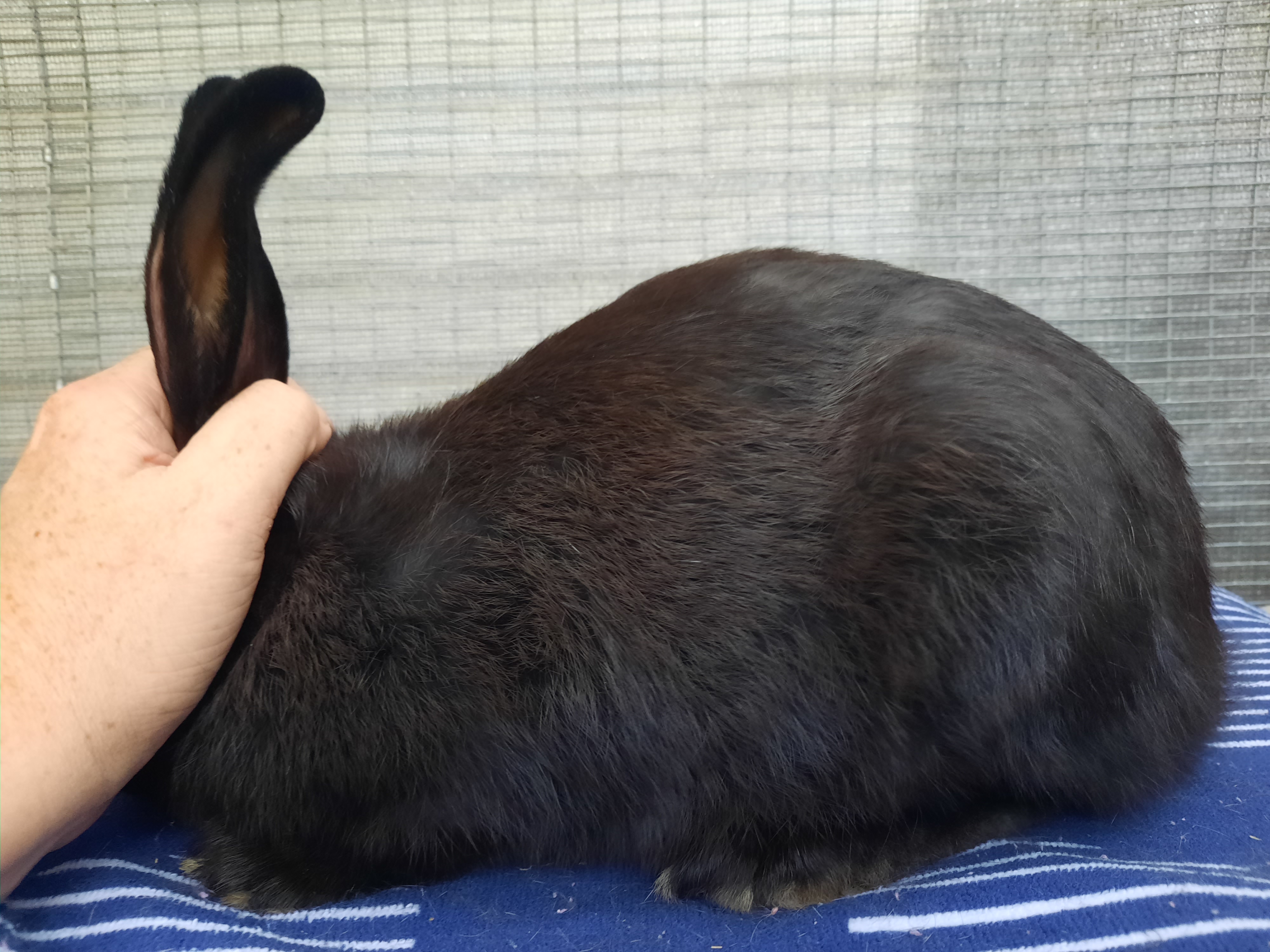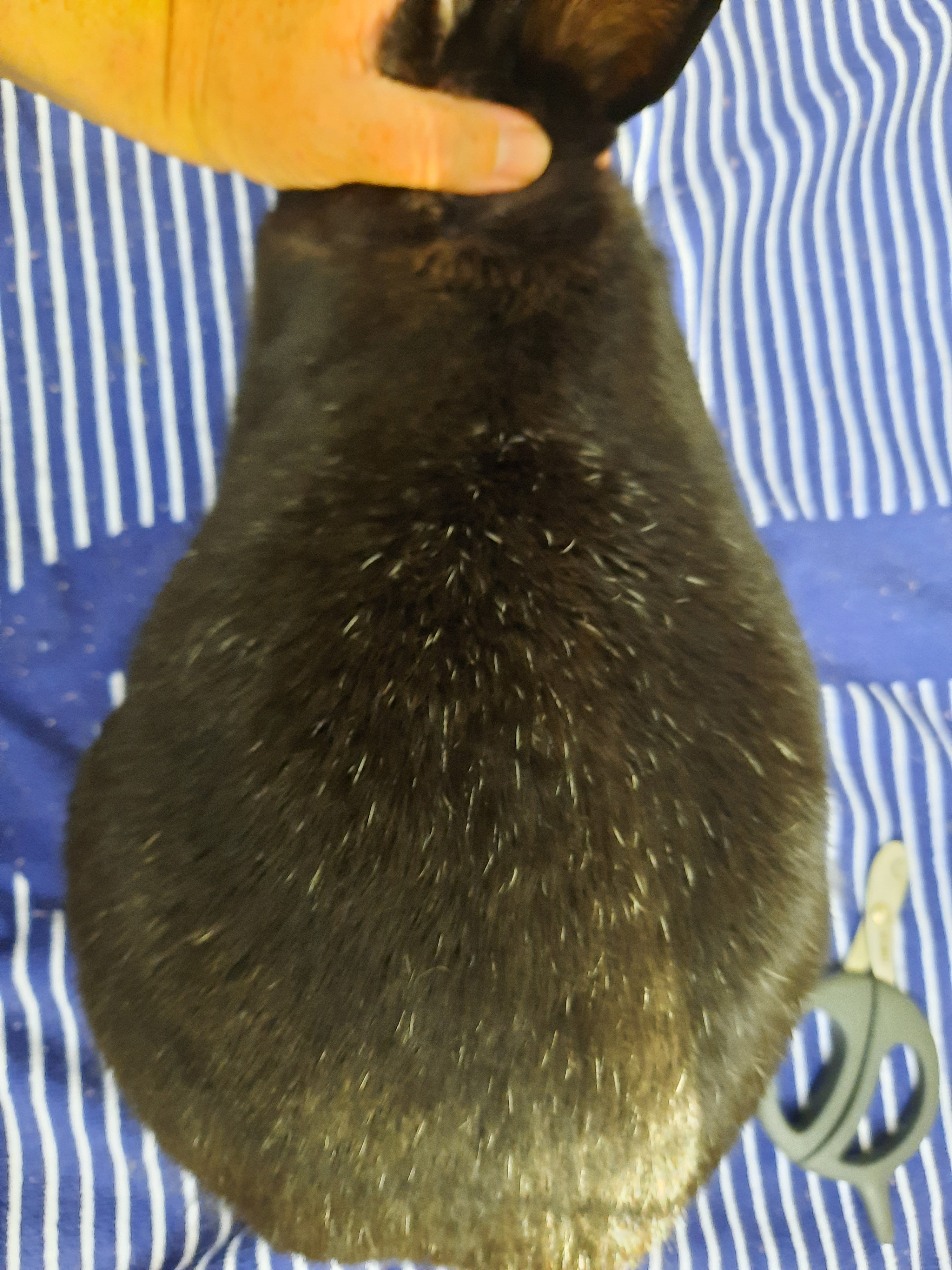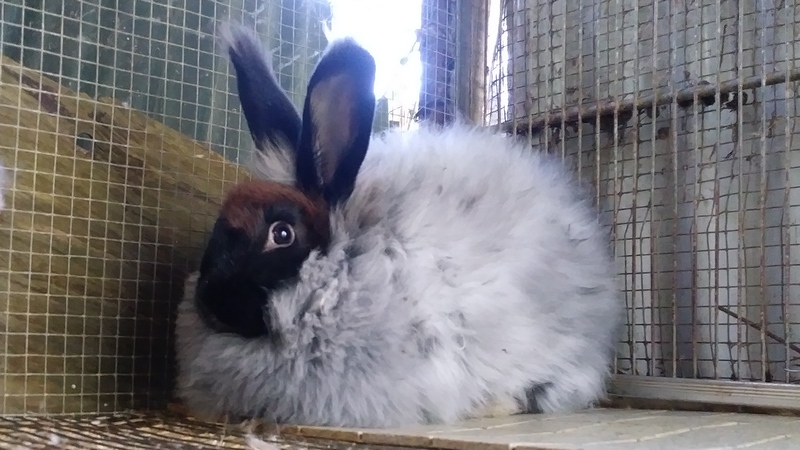CO Int
Active member
Hi everyone
I've got quite a complicated color issue. So far I have very few test breedings and no self color rabbits (that I know of) to test some of my theories so I've been spending a lot of time on the genetic calculator. :lol:
I breed a local South African rabbit breed that was developed from a large base of genes. Some of the ancestry includes Flemish Giants, New Zealand, Rex, Satin, Silver Fox, Chinchilla and maybe some angoras in between as well.
The breed standard only recognizes three colors - agouti, black and steel. Originally any chocolate and blue lines were removed, but they are looking to introduce the colors back in.
Steel is extremely dominant in the breed and therefore without test breeding very difficult to determine if a rabbit is black or super steel. However, I've noticed a lot of silvering/scattered white hairs on the "blacks". I have a doe that is black with scattered white hairs but has produced several black, agouti and steel kits. This makes me wonder if she is an agouti non-extension steel or a self black carrying steel. Is there any way to know? If I could find a self rabbit I might be able to answer my own question - what breeds are typically self colored?
Here is a very standard looking black. They don't really appear black. He is a 12 week old buck. I know he still has a baby coat - but he kind of demonstrates my question as I have older does that show the same kind of coloring. He doesn't really look black. He has some scattered white hairs but his fur appears brown. I didn't keep him to breed so I have no idea if he carried the steel gene but his father is a true agouti (A_ B_ Cc D_ E_). His mother is (__ B_ Cc D_ Es_)

Then I have this doe who parents were both steel. I'll breed her in a few months and should know more about her then but I'm wondering if silvering could be an issue here? These scattered white hairs are just too regular to be scattered for my taste and they are becoming more obvious as she gets older (she's 6 months now). The hair is also very thick at the base and very thin at the tip - the entire hair is white.

Just as I was starting to think I had steel sorted in my head the silvering thing popped up. Originally I didn't even consider silvering until I found out that the Silver Fox was part of the base genetics. With co-dominance being possible is it another variation on top of everything in the mix? I have 6 "black" rabbits of which only this one doe is showing a consistent kind of patterning - the others definitely appear like scattered white hairs - random and you can count them on one hand.
There have been several people both locally and internationally involved in the color genetics of this breed but it seems most people seem stumped. Some have suggested that they are dominant black (Ed) but if they were would all of them be black? Also, how does that tie in with the rabbit not actually appearing black?
Any help is appreciated - I will not give up until I understand color genetics!
I've got quite a complicated color issue. So far I have very few test breedings and no self color rabbits (that I know of) to test some of my theories so I've been spending a lot of time on the genetic calculator. :lol:
I breed a local South African rabbit breed that was developed from a large base of genes. Some of the ancestry includes Flemish Giants, New Zealand, Rex, Satin, Silver Fox, Chinchilla and maybe some angoras in between as well.
The breed standard only recognizes three colors - agouti, black and steel. Originally any chocolate and blue lines were removed, but they are looking to introduce the colors back in.
Steel is extremely dominant in the breed and therefore without test breeding very difficult to determine if a rabbit is black or super steel. However, I've noticed a lot of silvering/scattered white hairs on the "blacks". I have a doe that is black with scattered white hairs but has produced several black, agouti and steel kits. This makes me wonder if she is an agouti non-extension steel or a self black carrying steel. Is there any way to know? If I could find a self rabbit I might be able to answer my own question - what breeds are typically self colored?
Here is a very standard looking black. They don't really appear black. He is a 12 week old buck. I know he still has a baby coat - but he kind of demonstrates my question as I have older does that show the same kind of coloring. He doesn't really look black. He has some scattered white hairs but his fur appears brown. I didn't keep him to breed so I have no idea if he carried the steel gene but his father is a true agouti (A_ B_ Cc D_ E_). His mother is (__ B_ Cc D_ Es_)

Then I have this doe who parents were both steel. I'll breed her in a few months and should know more about her then but I'm wondering if silvering could be an issue here? These scattered white hairs are just too regular to be scattered for my taste and they are becoming more obvious as she gets older (she's 6 months now). The hair is also very thick at the base and very thin at the tip - the entire hair is white.

Just as I was starting to think I had steel sorted in my head the silvering thing popped up. Originally I didn't even consider silvering until I found out that the Silver Fox was part of the base genetics. With co-dominance being possible is it another variation on top of everything in the mix? I have 6 "black" rabbits of which only this one doe is showing a consistent kind of patterning - the others definitely appear like scattered white hairs - random and you can count them on one hand.
There have been several people both locally and internationally involved in the color genetics of this breed but it seems most people seem stumped. Some have suggested that they are dominant black (Ed) but if they were would all of them be black? Also, how does that tie in with the rabbit not actually appearing black?
Any help is appreciated - I will not give up until I understand color genetics!




























